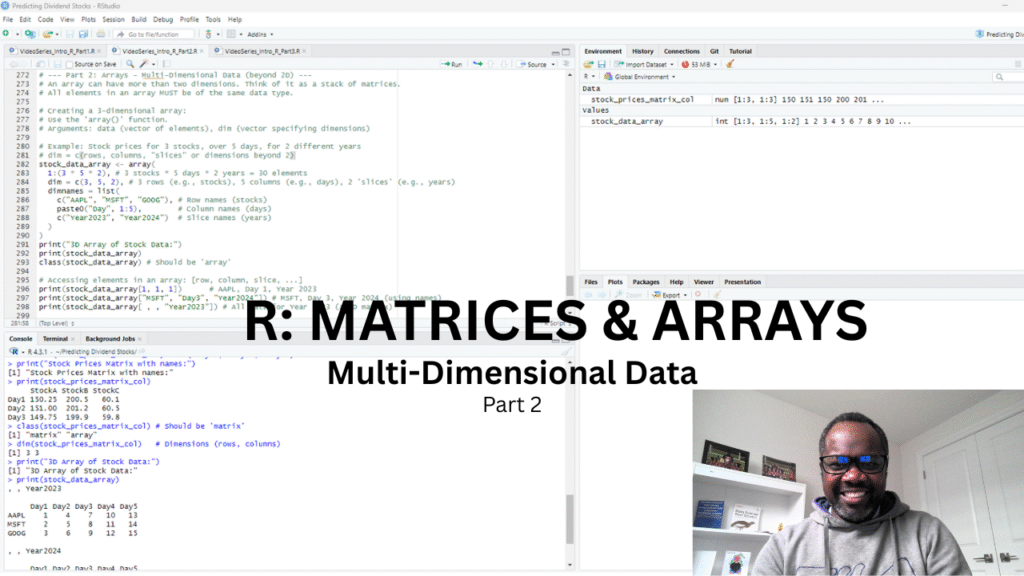We’re diving deeper into R’s data structures! If you’ve mastered vectors, lists, and data frames, you’re ready for the next level: Matrices and Arrays. While you’ll use data frames for most of your day-to-day work, understanding these specialized structures is key for more advanced numerical tasks and specific financial analyses.
In Part 2 of our R Programming series, our latest video, “Matrices & Arrays: Working with Multi-Dimensional Data,” breaks down these powerful concepts.
Matrices: Your 2D Number Grids
Think of a matrix as a spreadsheet, but strictly for numbers! It’s a two-dimensional collection where every element must be of the same type (usually numeric). They’re super handy for mathematical operations like matrix multiplication (%*%) often seen in portfolio theory or statistical modeling.
Arrays: Beyond Two Dimensions
Arrays take the concept of a matrix and extend it into multiple dimensions. Imagine stacking several matrices on top of each other – that’s an array! They’re perfect for organizing data with more than just rows and columns, like stock data across multiple years or scenarios.
Why They Matter
While they might seem niche, matrices and arrays are fundamental to R’s statistical power. They’re built for efficiency when dealing with large sets of homogeneous numerical data, making them crucial for certain quantitative methods and simulations.
Ready to expand your R data toolkit?
Ready for the Full Picture?
For a comprehensive deep dive into all of R’s data structures and how to apply them effectively in data analysis and financial modeling, be sure to grab your copy of my book and book series. It’s packed with detailed examples and advanced strategies!
🔗 Get your copy of my book and book series today: https://cuttellanalytics.com/books/
Don’t forget to subscribe for more R programming tutorials, and hit that like button if you found this video helpful!
#RProgramming #Matrices #Arrays #DataStructures #RStudio #DataAnalysis #NumericalComputing #FinancialModeling #LearnR
